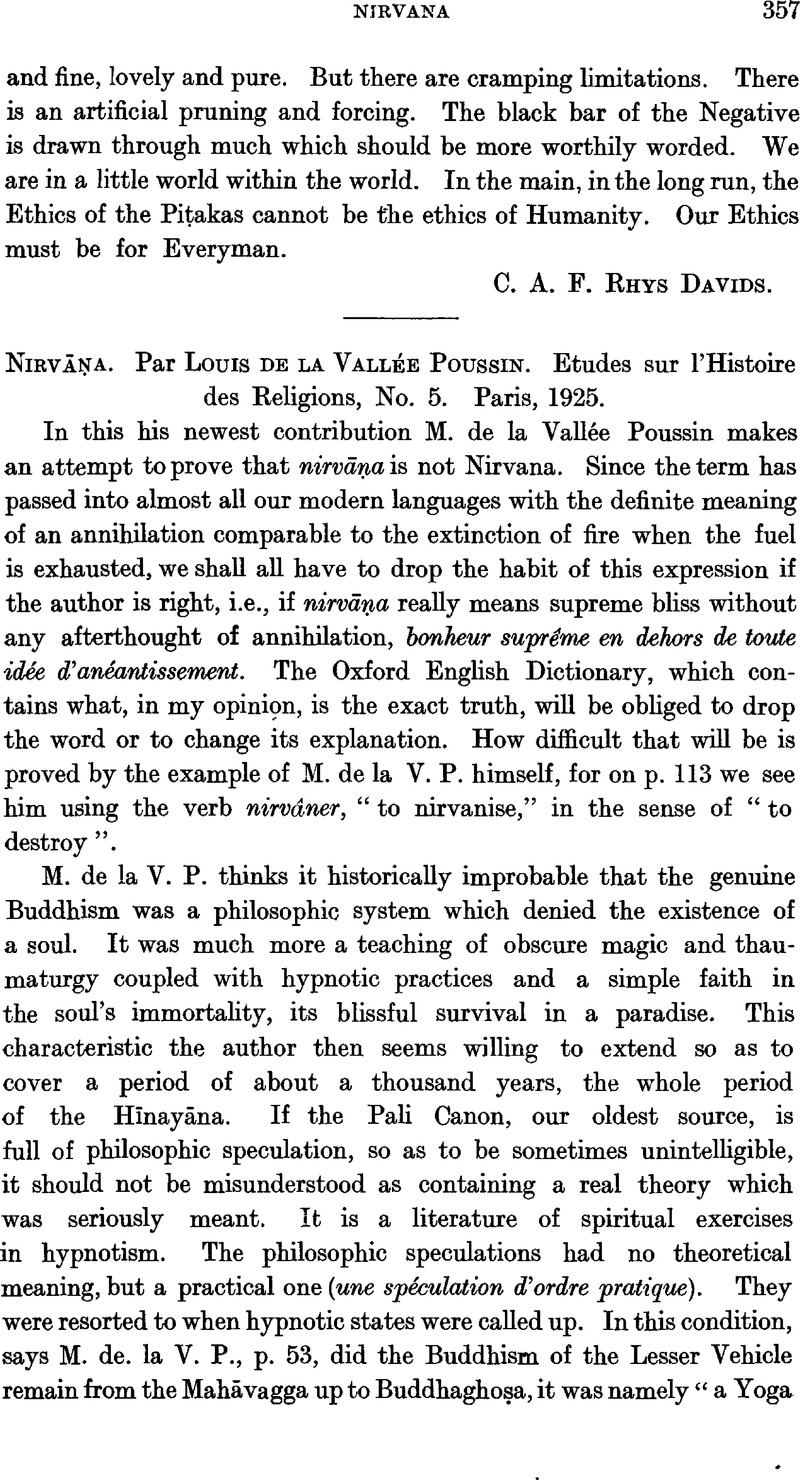No CrossRef data available.
Published online by Cambridge University Press: 24 December 2009

page 359 note 1 Senart, M. E., Album Kern, p. 104,Google Scholar and Dahlmann, Father J., Nirvāna (Berlin, 1896),Google Scholar assign to it the meaning of an extinction of all personal life in an impersonal absolute, it then becomes “un simple équivalent de brahman”. This, in my opinion, is quite right with regard to the Mahāyānistic idea, but not the Hinayānistic one. Cp. my Conception of Bnddhist Nirvāna, Leningrad, 1926, p. 35 ff.Google Scholar
page 359 note 2 Or “cosmotheistic” as Prof. M. Anesaki prefers to express it.